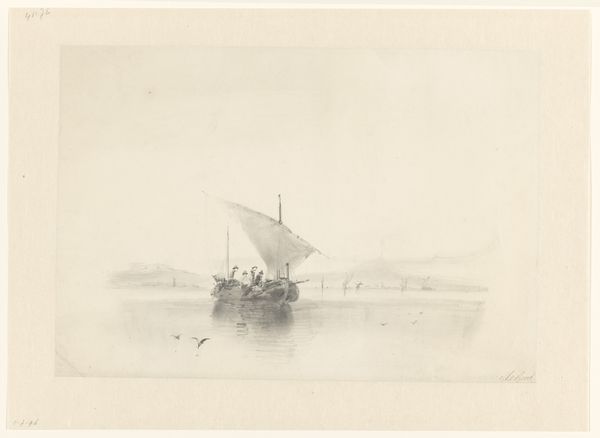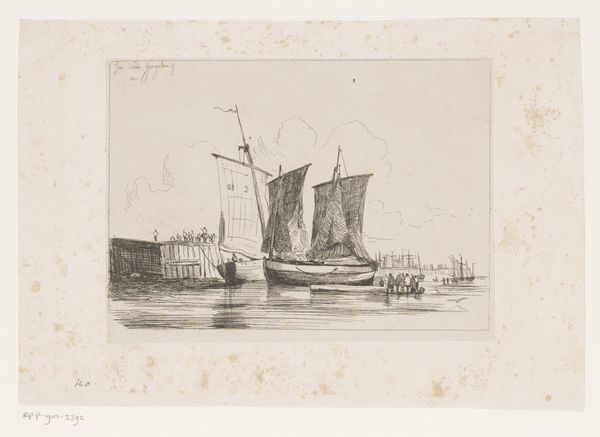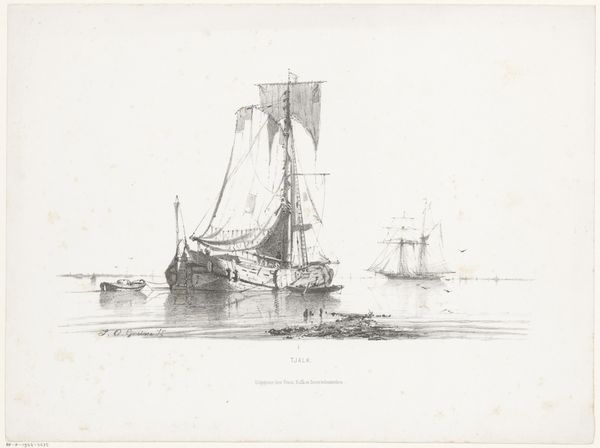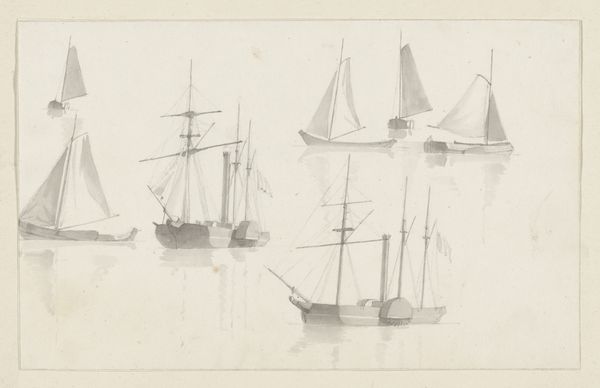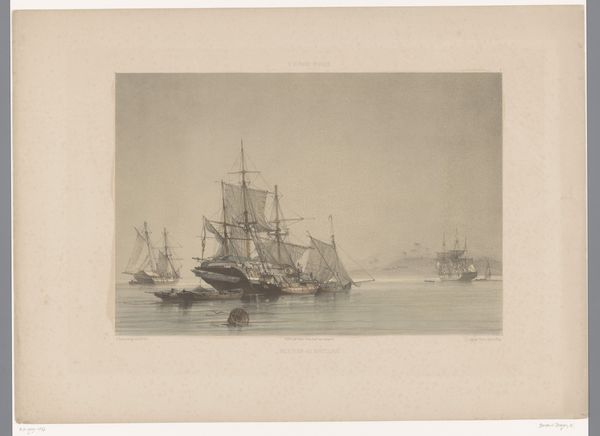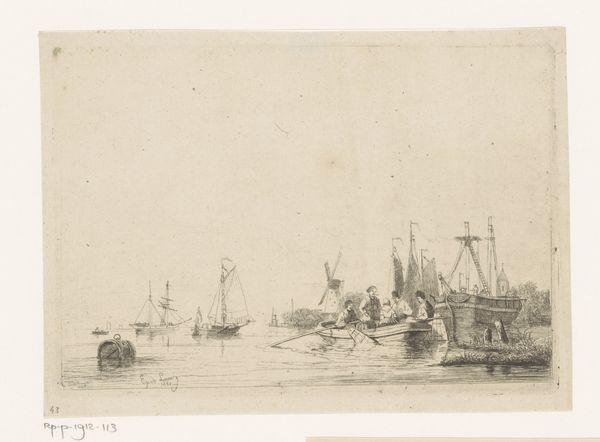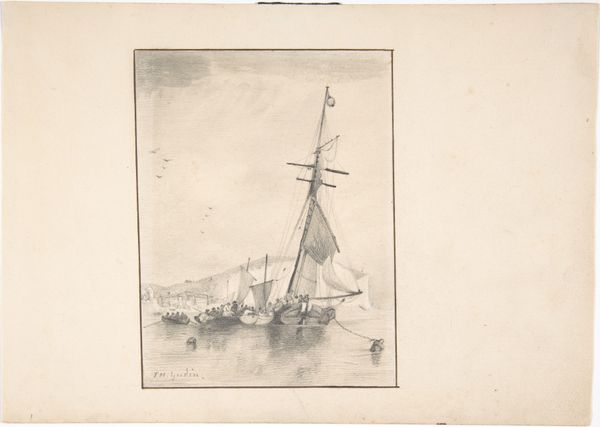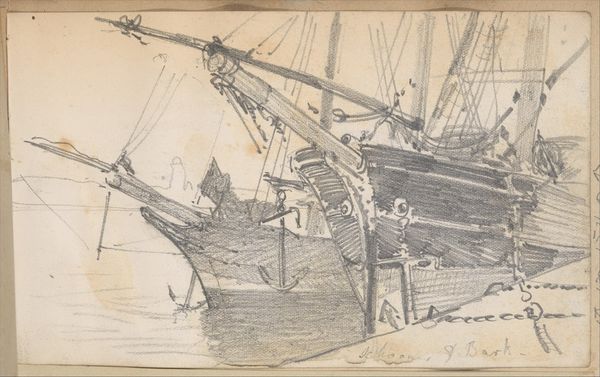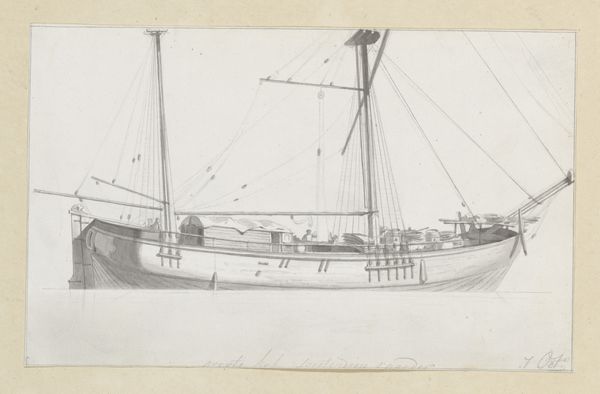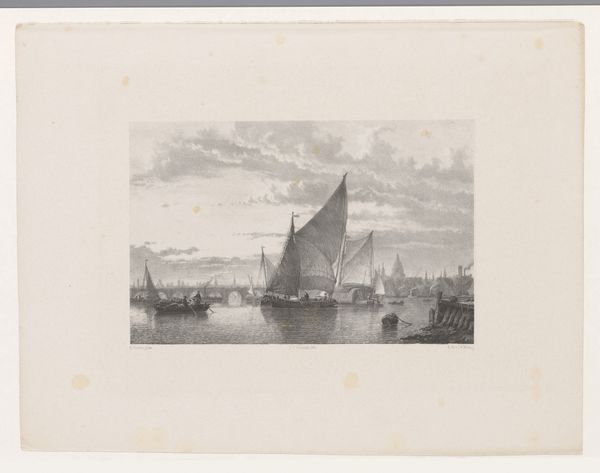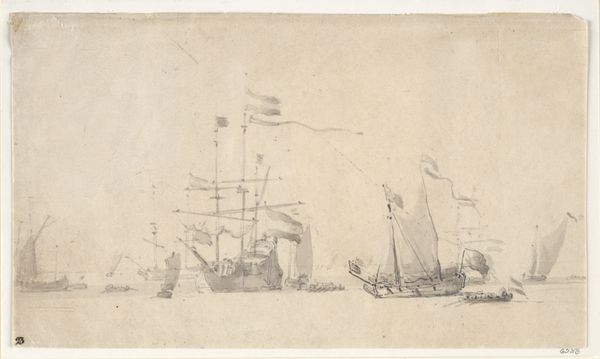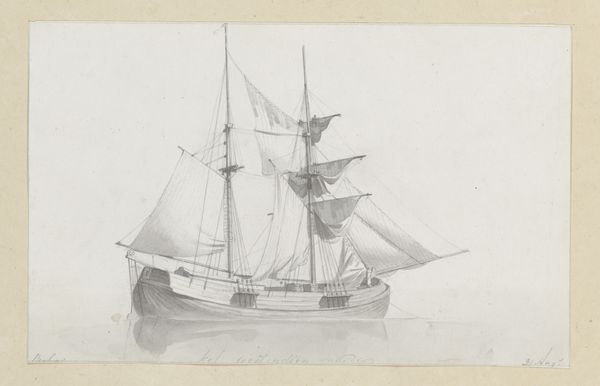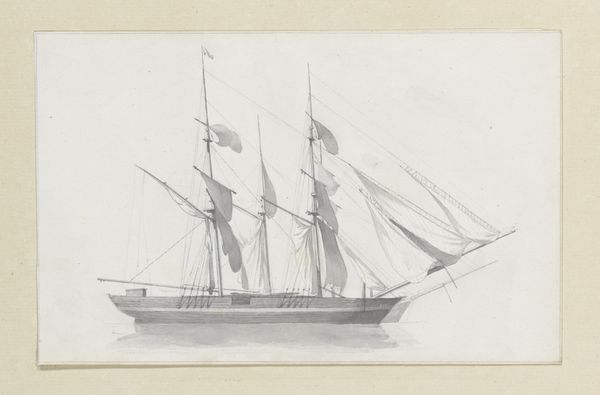
drawing, print, paper, watercolor, graphite
#
drawing
# print
#
landscape
#
paper
#
watercolor
#
romanticism
#
graphite
#
watercolor
Dimensions: 143 × 222 mm
Copyright: Public Domain
Curator: Before us is Richard Parkes Bonington's "Boats in a Harbor," circa 1824. It's a beautiful example of his work in watercolor and graphite on paper, held right here at The Art Institute of Chicago. What strikes you initially about it? Editor: It feels almost dreamlike. The soft, sepia tones create a sense of stillness, of a moment suspended in time. It evokes a very specific type of nostalgia. Curator: Absolutely. Bonington, often associated with Romanticism, was working within a time of great social upheaval. Looking closer, the maritime setting becomes relevant. The presence of boats can represent transportation, not just of goods but also of people and ideas. Maritime activity, for many in the working class, held a prominent presence. Editor: It does conjure a specific sense of the passage. Water is such a loaded symbol – both a source of life and a perilous, unknowable space. And the boats themselves…each carrying stories. I'm curious about the cultural significance of the sails, their shapes like yearning arms, what do you see when observing them? Curator: They evoke both possibility and constraint. Bonington’s technique adds another layer to this meaning, these very subtle outlines, the muted palette. I wonder if this lack of boldness represents the limitations for the majority compared to wealthy sea merchants and shipbuilders? I can’t help but interpret the limited color usage through a social lens, seeing them as representative of muted and limited prospects. Editor: Interesting. From an iconographic viewpoint, these vessels, suspended between clarity and obscurity, may be representative of Bonington and many like him existing betwixt Romanticism and the shifting landscape of the Industrial Revolution. Curator: It truly makes us think. Bonington does not present us with grand heroic ships that cut boldly through a shining sea. Rather, it is a tranquil harbor scene infused with longing, existing, you're right, in an uncertain space. A transient moment made permanent. Editor: Yes, and perhaps it is that tension, that visual pause, that resonates so strongly across centuries. It's in his depiction, Bonington memorializes our relationship with water, with ships and what it is that maritime trade symbolizes at large. What a sublime study! Curator: Absolutely. A reminder of the beautiful ways in which art intersects with broader societal narratives and personal stories. Thank you.
Comments
No comments
Be the first to comment and join the conversation on the ultimate creative platform.
